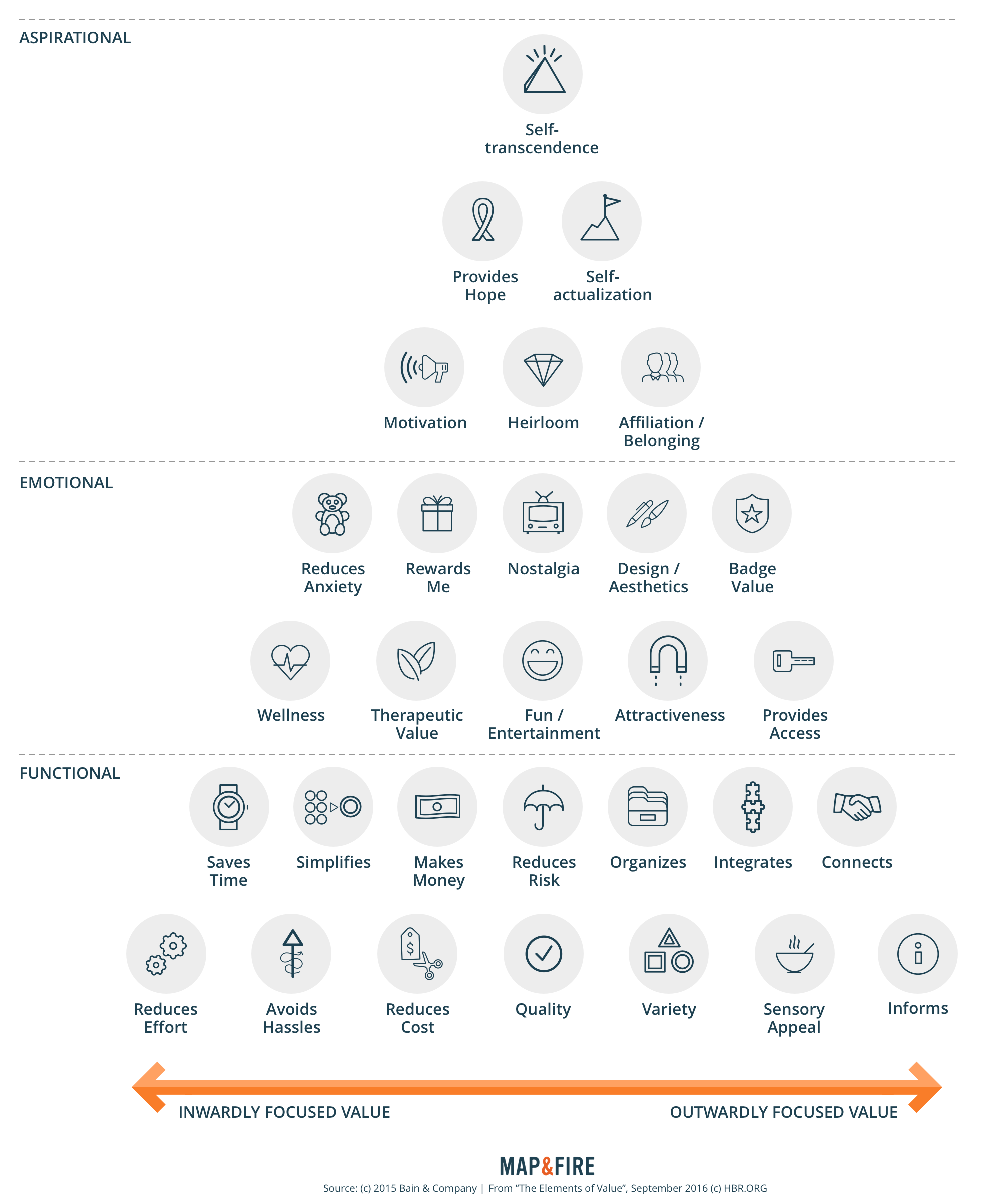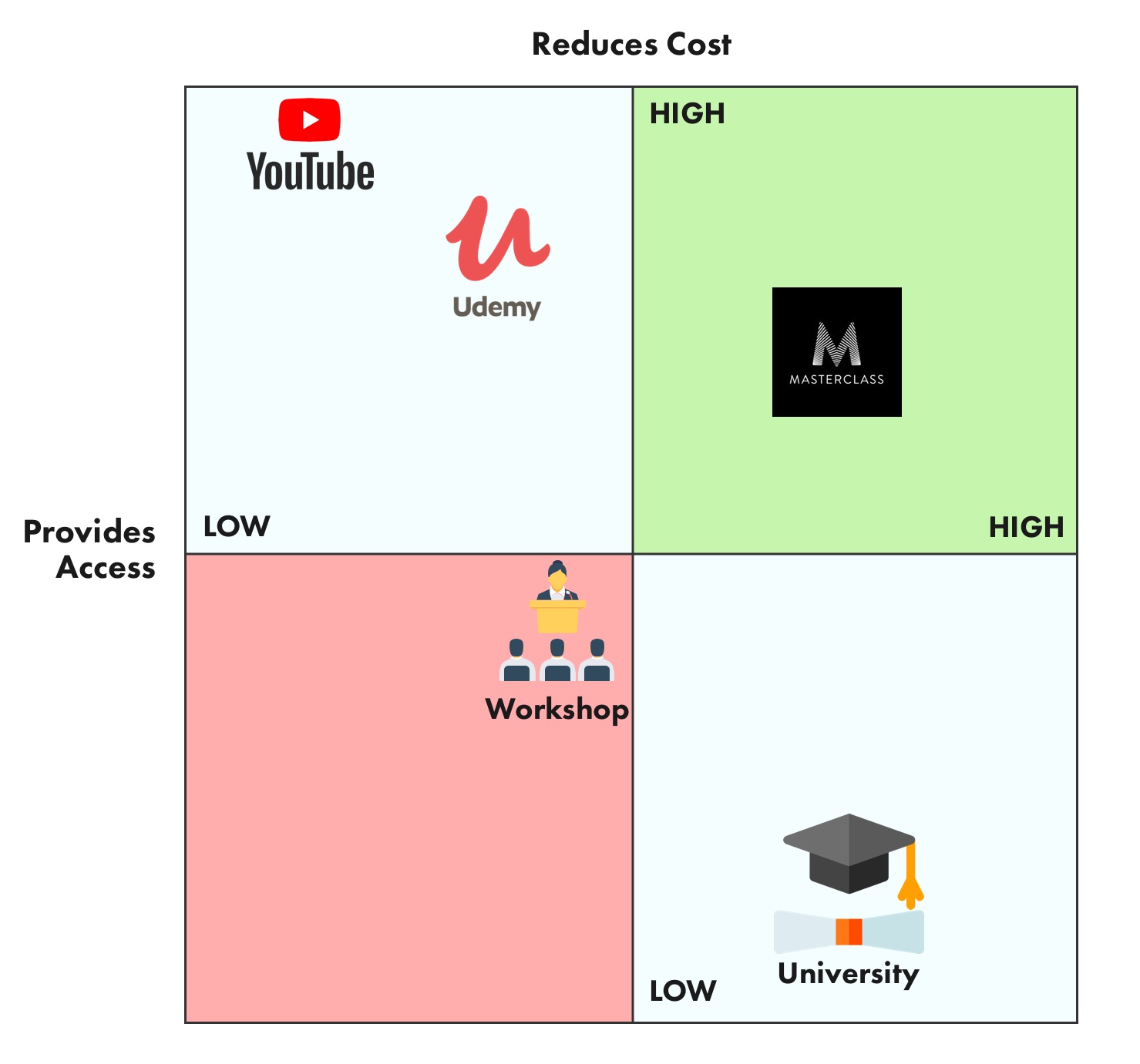
Whether it’s to align your internal team, present to customers, or pitch to investors, a competitive landscape map tells a concise, visual story. It’s a format that’s easy to consume and remember even for people that are new to your brand.
The core benefit of a landscape map is that it speaks to your brand’s position on its own as well as its position relative to competitors. This extra layer of information helps identify opportunities and challenges in the space. It also provides insights on how to create separation from the pack.
Of course like any strategic tool, the amount of value it provides depends on the execution of it.
To make this process effective it needs to strike a balance between depth of information and ease of use and understanding.
So, to keep things simple, we’ve distilled our approach into 3 steps.
- Establish The Brand Category
- Define The Landscape
- Plot The Competitors
By keeping the process lean it makes it easy to iterate and experiment with different views. As we go through the steps we’ll talk about why iteration is important for this exercise.
To see the process in action, we’re going to look at the vertical of online education.
Competitive Landscape Focus: Masterclass
One of the most interesting players to pop up in online education over the past several years is Masterclass. If you’re active on social media you’ve probably seen their ads.
The concept is simple: Learn about a profession from the most successful individuals in their field.
Masterclass courses are all online and each one includes around 4-5 hours of video content. They’re all delivered from experts in their respective fields and who, in many cases, are celebrities and household names.
They have a few courses in science, sports, and business but a vast majority right now are in the arts, including folks like:
- Martin Scorsese – Filmmaking
- Malcolm Gladwell – Writing
- Natalie Portman – Acting
- Christina Aguilera – Music
- Gordon Ramsay – Cooking
With that in mind, let’s look at how Masterclass compares strategically to its competitors.
1. Establish The Brand Category
The first step is to determine the category in which your brand operates.
This may seem like an easy step, but depending on the offering it’s not always obvious.
For the Masterclass example, while the core of the content is educational, there are elements of the business that could push it in other directions.
One area that CEO, David Rogier said they considered was entertainment. With a heavy representation of celebrities, it would be easy to embrace that side of things.
But according to David, they specifically wanted to skew away from that. He didn’t want them to be compared to offerings like Netflix. From a price and brand positioning perspective, he wanted Masterclass to be thought of first and foremost as educational content.
A critical point to remember here of course is that your customers have a say in this equation.
Even if your intention is to occupy a particular category, your customers may use your offering to satisfy a different need in their life.
While Masterclass wants to be educational, their audience may be more of a split between education and entertainment.
This is the first point where you can, and should, experiment with examining different potential views of your brand.
For the sake of this example though we’ll stick with Masterclass’ primary choice, education.
2. Define The Landscape
Now that we have the playing field in place, we have to decide which factors of that category we’ll use to evaluate the brands.
Like the first step, there are different ways you can go with this. The key is that we want to create a visual that tells an important story about the brand.
To do that we should consider:
- What’s critical to your customers’ decision-making process when they select a solution
- What speaks to the unique approach of your brand
To help narrow down our possibilities, we can use the Elements of Value. This framework represents the individual elements that customers care about when considering a product or service.
You can read more about the Elements of Value on our site’s field guide.

In this case, for our category of education, there are several elements at play:
Functional:
- Reduces Cost
- Quality
- Informs
- Saves Time
Emotional:
- Provides Access
- Reduces Anxiety
Aspirational:
- Motivation
- Self-Actualization
These are all factors in a customer’s decision-making process when they select a solution.
In our work, we often start by looking at an average of how a brand satisfies Functional elements versus Emotional and Aspirational elements. But to keep things simple, we can zoom in on just two elements that contribute to the brand’s story.
For Masterclass, a big part of their value proposition and what makes their brand unique in the education space is a combination of:
- Provides Access: The ability to learn from top individuals in their field
- Reduces Cost: Achieving that access at an affordable price point
Whether or not their target customers believe those are the most important elements is hard to say, but it gives us a starting point for a first iteration.
3. Plot The Competitors
In this last step we can select our competitor options and then plot them on our map to see how they compare.
For this example we’ve scored some online brands as well as some offline categories that would compete with Masterclass in the education space.
Ideally these scores would be informed by customer and market research, but to get started we can make some educated approximations to illustrate the relationship between the different options.

When you go through this you’ll want to be clear about how an element applies to the vertical you’re in.
In the case of education, “Provides Access” has at least two aspects:
- Access to insights from top talent (the strength of Masterclass)
- Access to engage with experts (the strength of a University)
In another vertical, the definition might be very different.
When we then plot all of these values, we get our map view:

For this first iteration, the important piece is that the values you select make sense relative to one another. Even if the exact placements get refined with additional market knowledge, it still tells a compelling story about the brand positioning for Masterclass.
Final Thoughts
Two final points to keep in mind as you go through this process:
- The landscape is a snapshot in time. As your brand evolves and competitors evolve, you’ll need to reflect those changes on your competitive landscape.
- There are many possible views of the landscape. Each variable of the process — brand category, elements of value, and scores — can all vary and affect the final view. Because of that, you should experiment and play with those variables.
By looking at your landscape from multiple views you’ll gain new insights into your brand’s position and figure out how to tell the most compelling story about it.

Crystallize Your Brand’s Unique Position
If you want help identifying your brand’s unique position reach out for a free consultation. We’ll help you transform your best business thinking into an actionable, shareable, growth-oriented guide. Click below to learn more about the Brand Guidebook process.

